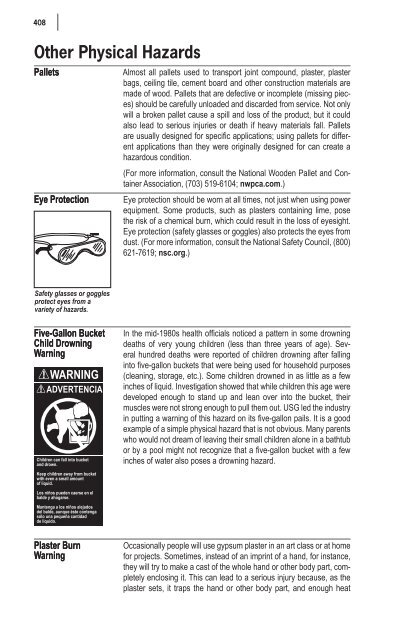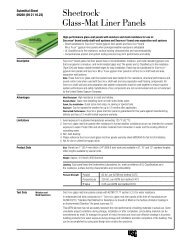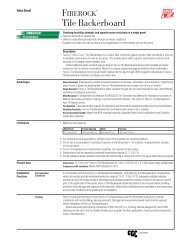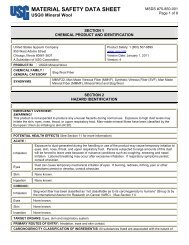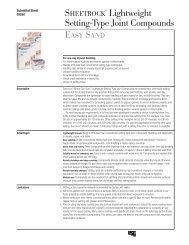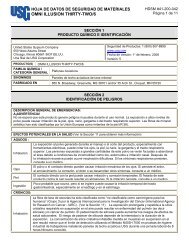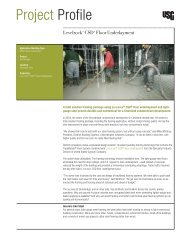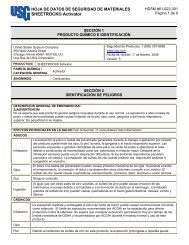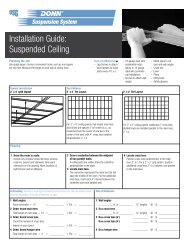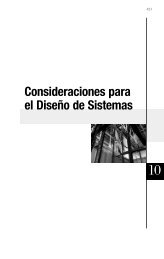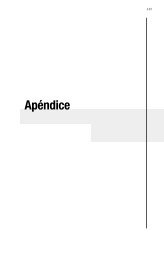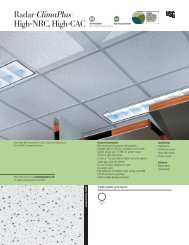13 Safety Considerations & Material Handling - USG Corporation
13 Safety Considerations & Material Handling - USG Corporation
13 Safety Considerations & Material Handling - USG Corporation
Create successful ePaper yourself
Turn your PDF publications into a flip-book with our unique Google optimized e-Paper software.
408 |<br />
Other Physical Hazards<br />
Pallets<br />
Eye Protection<br />
<strong>Safety</strong> glasses or goggles<br />
protect eyes from a<br />
variety of hazards.<br />
Five-Gallon Bucket<br />
Child Drowning<br />
Warning<br />
WARNING<br />
ADVERTENCIA<br />
Children can fall into bucket<br />
and drown.<br />
Keep children away from bucket<br />
with even a small amount<br />
of liquid.<br />
Los niños pueden caerse en el<br />
balde y ahogarse.<br />
Mantenga a los niños alejados<br />
del balde, aunque éste contenga<br />
sólo una pequeña cantidad<br />
de líquido.<br />
Plaster Burn<br />
Warning<br />
Almost all pallets used to transport joint compound, plaster, plaster<br />
bags, ceiling tile, cement board and other construction materials are<br />
made of wood. Pallets that are defective or incomplete (missing pieces)<br />
should be carefully unloaded and discarded from service. Not only<br />
will a broken pallet cause a spill and loss of the product, but it could<br />
also lead to serious injuries or death if heavy materials fall. Pallets<br />
are usually designed for specific applications; using pallets for different<br />
applications than they were originally designed for can create a<br />
hazardous condition.<br />
(For more information, consult the National Wooden Pallet and Container<br />
Association, (703) 519-6104; nwpca.com.)<br />
Eye protection should be worn at all times, not just when using power<br />
equipment. Some products, such as plasters containing lime, pose<br />
the risk of a chemical burn, which could result in the loss of eyesight.<br />
Eye protection (safety glasses or goggles) also protects the eyes from<br />
dust. (For more information, consult the National <strong>Safety</strong> Council, (800)<br />
621-7619; nsc.org.)<br />
In the mid-1980s health officials noticed a pattern in some drowning<br />
deaths of very young children (less than three years of age). Several<br />
hundred deaths were reported of children drowning after falling<br />
into five-gallon buckets that were being used for household purposes<br />
(cleaning, storage, etc.). Some children drowned in as little as a few<br />
inches of liquid. Investigation showed that while children this age were<br />
developed enough to stand up and lean over into the bucket, their<br />
muscles were not strong enough to pull them out. <strong>USG</strong> led the industry<br />
in putting a warning of this hazard on its five-gallon pails. It is a good<br />
example of a simple physical hazard that is not obvious. Many parents<br />
who would not dream of leaving their small children alone in a bathtub<br />
or by a pool might not recognize that a five-gallon bucket with a few<br />
inches of water also poses a drowning hazard.<br />
Occasionally people will use gypsum plaster in an art class or at home<br />
for projects. Sometimes, instead of an imprint of a hand, for instance,<br />
they will try to make a cast of the whole hand or other body part, completely<br />
enclosing it. This can lead to a serious injury because, as the<br />
plaster sets, it traps the hand or other body part, and enough heat<br />
chapter<strong>13</strong>.indd 408 1/<strong>13</strong>/2009 10:36:31 AM


